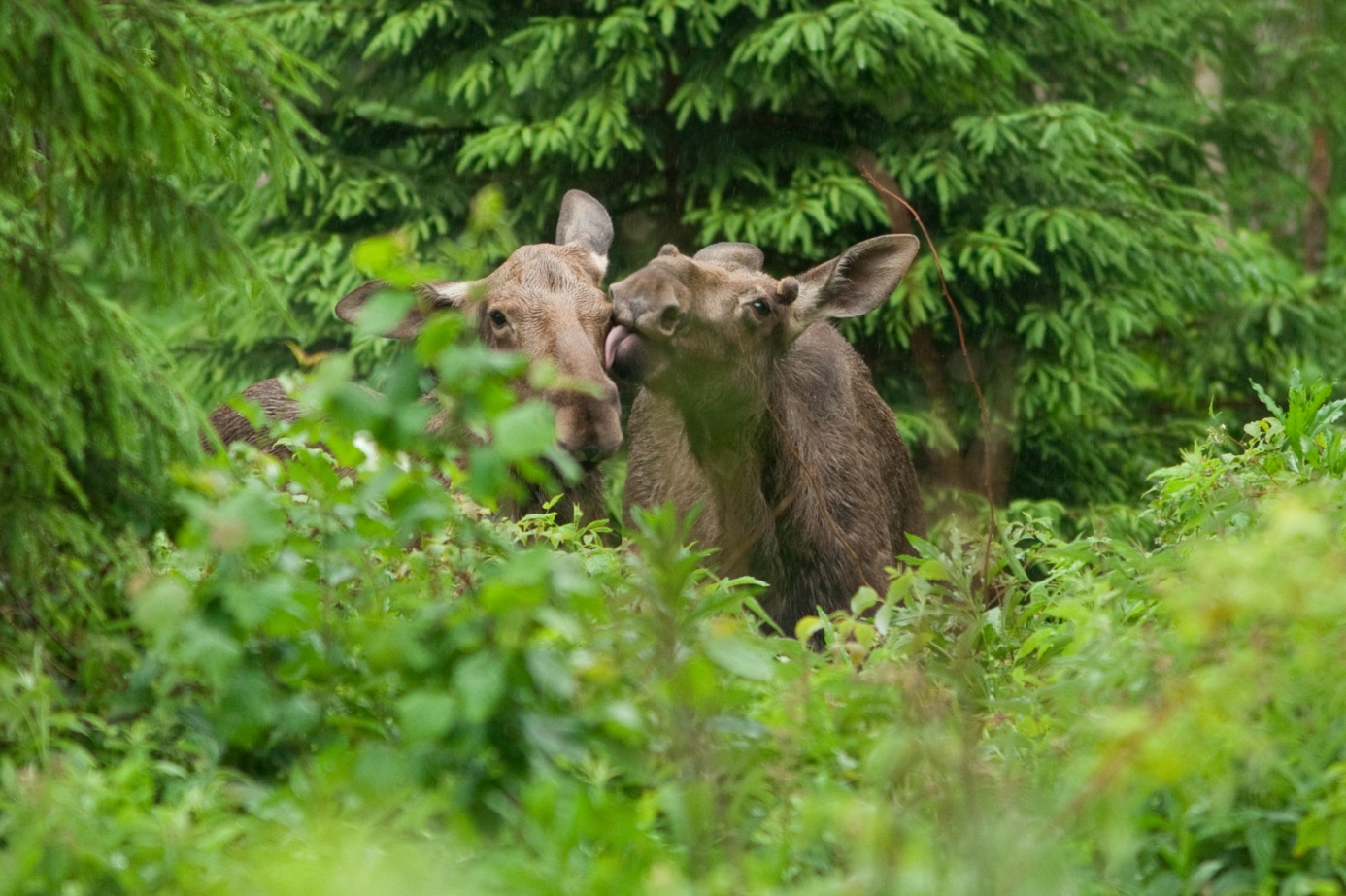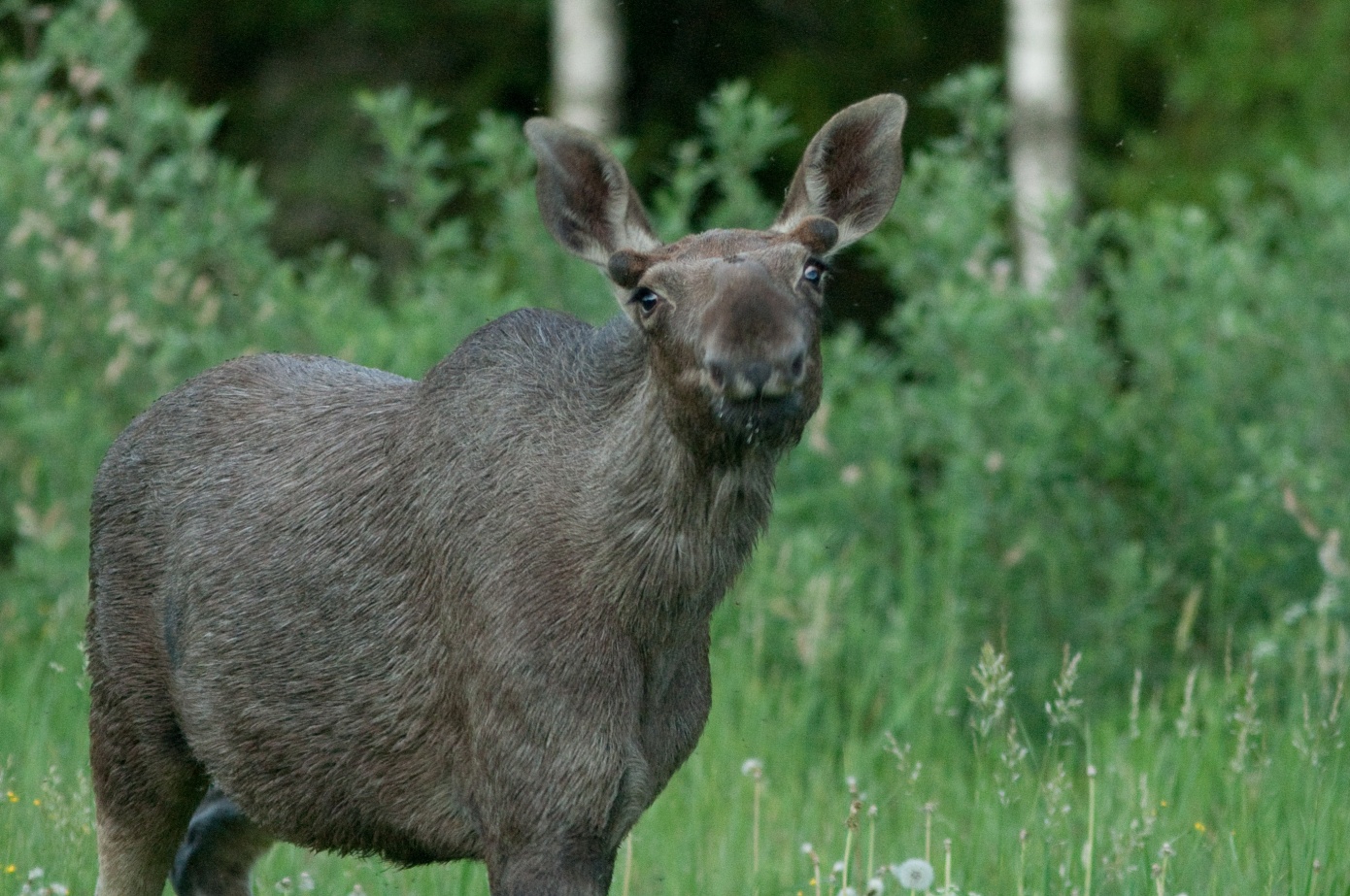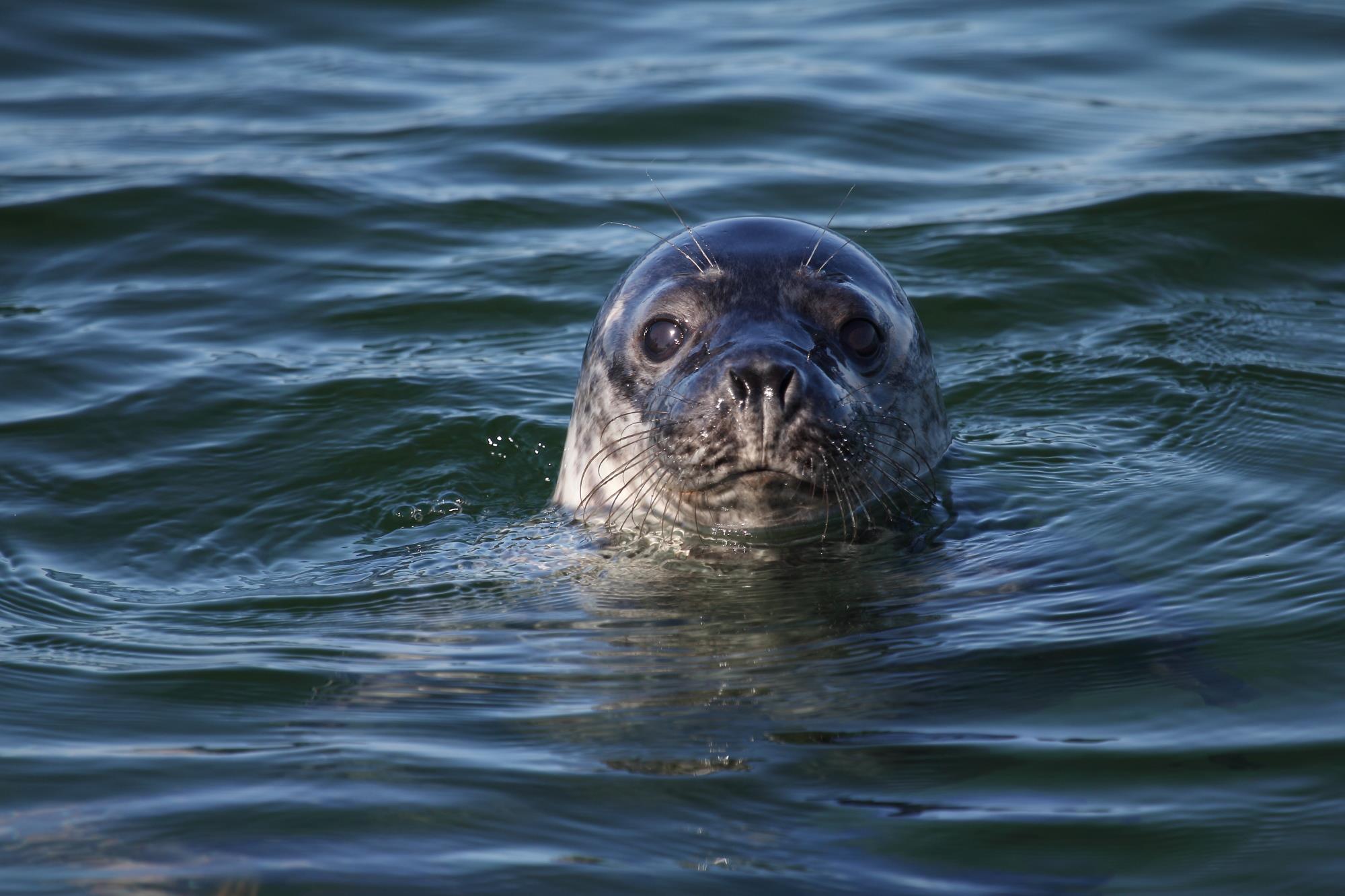Moose photography in Estonia !
Moose, the largest member of the deer family, is regardless of its size sometimes still quite difficult to spot. So it happens, that the only thing drawing an observer’s attention, could be a sight of antlers from behind a bush. With a growing feeling of suspicion, I look closer, and… there are two! On this rainy summer day in June, I spend the afternoon with a moose couple.
The population of moose in Estonia is approximately 12 000, so a moose is not a very uncommon sight in Estonian nature, if one knows where to look – and what to look for. But a couple eating lunch together is surely worth watching and taking photos of. There is something that makes this afternoon interesting indeed – namely the fact that moose breed from the end of August to the beginning of October, and after that, the male and female go their separate ways until the next autumn comes. Moose are mostly considered rather solitary and not very social animals. As National Geographic reports, the male and female may occasionally feed in the same grounds, but tend to ignore each other. Now, these two were certainly an exception to the rule, because things were far from ignoring. Male gave the female one smooch after the other, each new one bigger than the last. Of course, this intimate-looking behavior brought them to a grand finale, a brief mating attempt.
Those who wish to photograph moose, should know – they can behave in quite unexpected ways, i.e. like big puppies with antlers, and not only during mating period. When the weather gets hot, moose seek relief in water. They are very good when it comes to swimming. And the relief, indeed, gives back all the energy that the heat has taken away. After just another hot day, I ended up facing a young bull who was enjoying the coolness of water in a ditch. It was a cheerful boy with small antler knobs covered with velvet – a sign of springtime – and no „bell“ dangling from his throat yet. The size of antlers depends on the age of the bull and the diet. Older bulls lose their antlers usually in November, younger ones can also do it in March.
The young moose was full of curiosity. We were staring one another for a moment; then he started moving. Coming towards me, he stepped into water again, and then turned abruptly, throwing his head around. This was followed by another sharp turn and darting to and fro. Like a puppy asking the master to play with him, he kept running further, sneaking closer, throwing his backside in my direction, glancing back, then making a sudden hop and spurting to the edge of water. Itching to move, not able to stand still for more than 6 seconds, the kid was anxious to get to know the world – and perhaps to find someone to play with.
He was lucky, as I turned out to be only a photographer. Moose has few natural enemies: bears and sometimes also packs of wolves, but the main force in reducing moose population is hunting – during 2013/2014 hunting season, 6532 moose were hunted in Estonia. Rock drawings and cave paintings reveal the fact that moose have been hunted since Stone Age.
Moose can be found in countries with variously dense mixed forest – they live in forested areas with nearby lakes, bogs, swamps, streams etc.During winter, moose prefer to stay in drier areas. They could be often found in greatest numbers in places that have been disturbed by wildfire or forestry operations, because in such cases, light can penetrate to the forest floor, supporting the growth of young trees and shrubs. The young trees and shrubs, however, are moose’s favourite food without a doubt.
Moose photography in Estonia is available almost all year around but some photographers say mating time is the best time. Now before August is the best time to book a place in moose photography tour in Estonia.
Text and photos : Merily Salura









